Trier is located in the western part of Germany in the Rhineland-Palatinate state, close to the country's borders with Luxembourg.
The historic town is approximately 200 kilometres west of Frankfurt and about 50 kilometres east of Luxembourg City.

A view over the Mosel river and Trier Germany
Established in 16 BC during the rule of Roman Emperor Augustus, Trier boasts the title of Germany's oldest city. It has been ruled by Roman emperors, prince bishops and imperial electors, who all put their mark on the city's diverse cultural and architectural heritage.
Nowadays, visitors to Trier can enjoy the sights of the town's well-preserved Roman past, such as the grand Porta Nigra, the best-preserved Roman city gate in the world.
Trier's historical significance has earned it the prestigious status of a UNESCO World Heritage site.
Luxembourg Airport (LUX) is just over the German border but is still the closest airport to Trier. It is a good option for those who are travelling by air within Europe or who do not mind a connecting flight if arriving from other parts of the world.
Distance to Luxembourg Airport: 39km
Distance to Frankfurt Hahn Airport: 63km
Distance to Cologne-Bonn Airport: 155km
Distance to Frankfurt Airport: 164km
Frankfurt Hahn Airport is the somewhat notorious former military airport (because it was used as 'Frankfurt Airport' by certain low-cost carriers), although it works out relatively well for those wanting to get to Trier.
Frankfurt Airport is the largest in Germany and probably the best choice for those travelling from other continents or who are looking for a wide choice of carriers and destinations.
The main Trier train station ('Trier Hauptbahnhof') is located on the other side of the old town from the Mosel river. It is within easy walking distance of the main sites and accommodation in the centre of Trier.
Trier is served by regional services along the Moselle valley and down to Luxembourg City. Regular regional express services connect Trier to Cologne and Mannheim. Two trains a day connect Luxembourg City with Düsseldorf. This service runs as a regional express between Trier and Koblenz and as an InterCity service for the rest of the route.
The German rail service offers a ticket (Rheinland-Pfalz-Ticket + Lux) which includes unlimited travel on regional trains and bus services in the Rhineland-Palatinate, Saarland and Luxembourg for a day.
The A-604 motorway connects Trier with Luxembourg City. In the other direction it connects with the main A-1 motorway which heads south to Mannheim and north to Koblenz (and eventually through to Cologne and Bonn).
The centre of Trier is not particularly big. Visitors will find a good choice of accommodation in the old town near the main sights or on the banks of the Mosel river.
If you know when you are planning to go but haven't decided on accommodation, then use the map below to get an idea of which properties are available and to compare prices during the period you wish to travel.
Enter your proposed dates and use the '+' to zoom in on a location and reveal more properties. Click on the price above a property to see more information.
(Please note that this selection will also include some guesthouses, pensions and self-catering apartments for those who are interested in that form of accommodation!)
Alternatively, if you would like a list of properties available on your proposed dates of travel, use the search box below to find accommodation:
The city of Trier can trace its roots back to Roman times. It was initially christened Augusta Treverorum before it rose to prominence during the late antiquity,
Archaeological findings point to human activities in the region dating as far back as the 9th millennium BC. Celtic tribes were known to inhabit the area in pre-Christian centuries.
The transition into a bustling Roman city occurred in 16BC when it became Augusta Treverorum, reaching its peak by the end of the 2nd century AD.
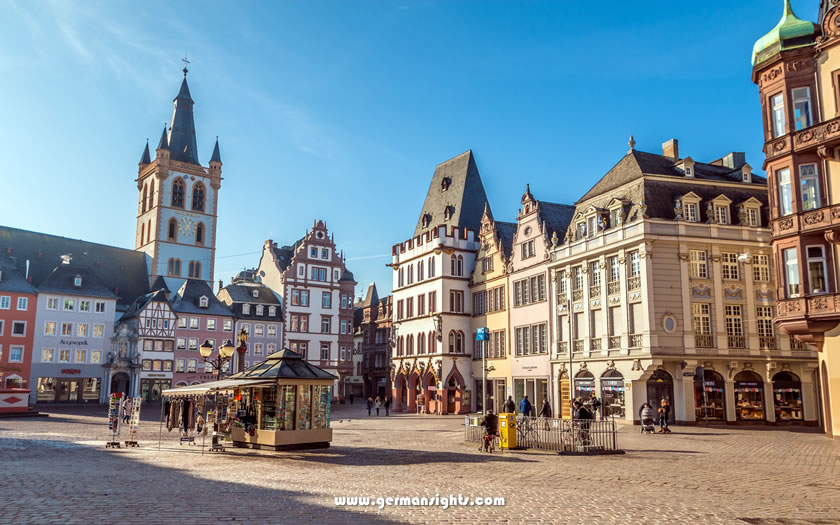
Square on the old town of Trier
The city played host to Roman emperors and served as one of their administrative hubs. By the late third century, it had morphed into an important bishopric and underwent several changes in political affiliation.
It also earned a new name in the process - Treveris, which is where 'Trier' came from.
At different points in the city's history, Trier was under Franconian, Frankish, Holy Roman Empire, French, Prussian and German rule until finally becoming part of Rhineland-Palatinate after World War II.
The UNESCO World Heritage Site listing for Trier is formally called 'Roman Monuments, Cathedral of St Peter and Church of Our Lady in Trier', which gives a good overview of the main sights in the city.

The Porta Nigra (or 'Black Gate') in Trier
One of the best places to start your exploration is the Porta Nigra. It is the largest Roman city gate north of the Alps and has been a UNESCO World Heritage Site since 1986. Built around 170AD, the gate was given its name (which means 'black gate') due to the darkened color of its sandstone.
The structure is remarkable because it has remained largely intact, unlike many Roman structures that did not survive to the same extent. Part of the reason is because it was transformed into a church in the 11th century.
Napoleon ordered the removal of the church portions during the early 19th century, restoring the gate to its Roman origins.
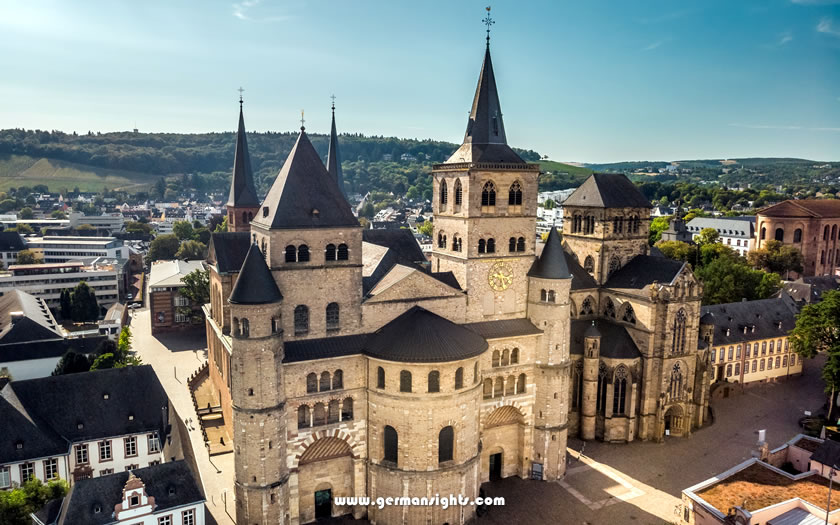
Trier cathedral in the heart of the old town
Trier cathedral, known in German as the 'Dom St Peter', holds the title as Germany's oldest cathedral. It was built over the house of the Roman Emperor Constantine's mother, and parts of the original Roman structure are still visible within the existing building.
With construction on the site beginning as early as 270 AD, the cathedral features a blend of styles from Byzantine, Romanesque, Gothic, and Baroque eras.
But its historical significance extends beyond architecture. It houses many artistic and religious treasures, including the 'Holy Robe', believed by many to be the seamless tunic worn by Jesus Christ shortly before his crucifixion.
The tunic is rarely displayed, but attracts thousands of pilgrims during the 'Heilig-Rock-Tage' held after the second Sunday of Easter.

The cloister behind the Liebfrauenkirche and Trier cathedral
Next door, you will find the Liebfrauenkirche ('Church of Our Lady'), which is a beautiful example of Gothic architecture. It is also part of the UNESCO listing, although it dates from the later 13th century.
The Church of Our Lady actually shares a wall and cloister with the Trier Cathedral. It was badly damaged in World War II and rebuilding work lasted until 1951.
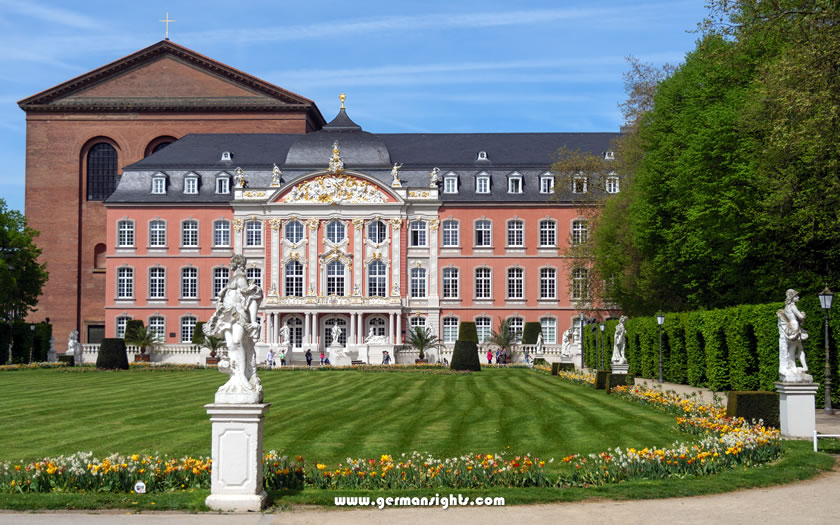
The Electoral Palace in Trier
For a breath of fresh air and a relaxing walk, head to the Palastgarten ('Palace Garden'). The Electoral Palace, or 'Kurfürstliches Palais', in Trier is a highlight of the Rococo period of architecture. This former residence of the Archbishops and Electors of Trier is considered one of the most beautiful Rococo palaces in the world.
The palace facade is brightly colored with detailed ornamentation synonymous with Rococo style. It isn't possible to enter the building as it is still used for administrative purposes.
Adjacent to the palace is the Palace Garden, a landscaped masterpiece stretching over a vast area. Dating back to the 18th century, the garden is laid out in classic Baroque-style, with well-manicured lawns, fountains, informative plaques, statues, and flower beds.
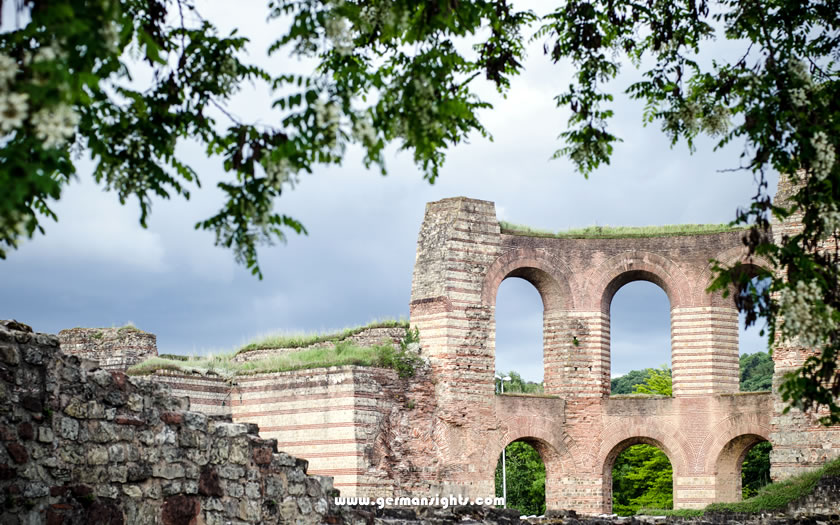
The remains of the Imperial Roman baths in Trier
The Roman bridge over the Mosel river is the oldest standing bridge in Germany and the oldest in Europe north of the Alps. It was built in the 2nd century AD.
The Constantine Basilica or 'Aula Palatina' is a former Roman basilica from the 4th century AD. It also later served as the residence of the Bishops of Trier in the Middle Ages. It is now operated as an Evangelical church.
The remains of ancient Roman baths can also be viewed in Trier. There are the ruins of an Imperial bath complex near the Landesmuseum on the eastern end of the old town, while the the Forum Baths (Thermen am Viehmarkt) are the oldest Roman bath complex in Trier (although they were only rediscovered in 1987 after the UNESCO listing and as such are not protected by it). The Barbara Baths are the third and largest set of Roman baths in the city.
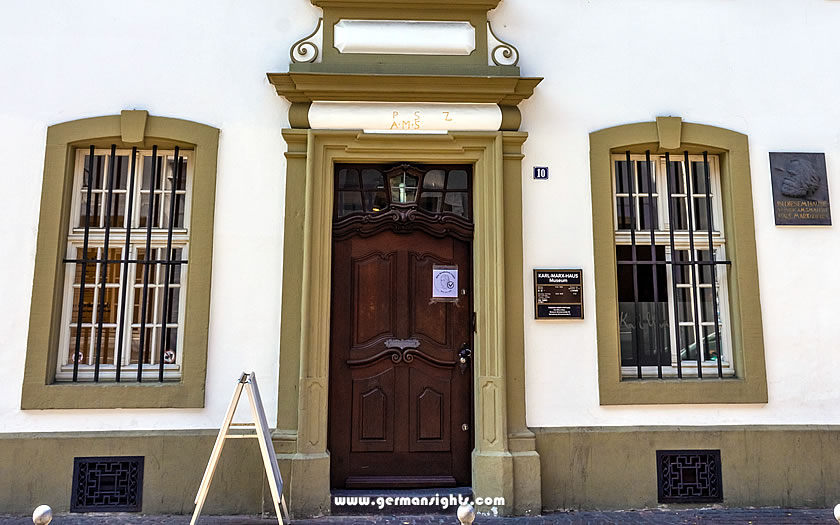
The birthplace of Karl Marx in Trier
The Rheinisches Landesmuseum Trier showcases the rich history and cultural treasures of the area. The exhibits in the permanent exhibition range from the Stone Age to the Baroque era. They include the Neumagen wine ship, the largest collection of mosaics north of the Alps and the massive gold coin hoard from the Roman imperial period with a total weight of 18.5 kilos.
History enthusiasts will enjoy the Stadtmuseum Simeonstift (City Museum), which also houses a collection of Roman artifacts, as well as the Spielzeugmuseum (Toy Museum) for a lighter cultural experience.
Don't miss the chance to visit the birthplace of the political philosopher Karl Marx. The Karl-Marx-Haus now serves as a museum dedicated to his life and work.

Cochem is renowned for its picturesque setting in the Moselle valley. The town’s most notable landmark, Cochem Imperial Castle, stands majestically on a hill and dates back to 1000 AD.
Visitors can ride a chairlift up to a spectacular view over the castle and surrounding countryside or wander through the charming old town with its half-timbered houses.
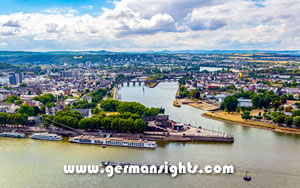
Koblenz is a lively city situated at the confluence of the Rhine and Mosel rivers in Germany. The Deutsches Eck (German Corner), where the two rivers meet, features an impressive statue of Emperor William I.
The city’s rich history can be explored in its Old Town and the impressive Ehrenbreitstein Fortress on the other bank of the river Rhine.
The tourist office in Trier is located near the Porta Nigra. It is open seven days a week in summer, with slightly more restricted hours on Sundays and holidays.
The Trier tourist office is only open six days a week (closed on Sundays) in the winter months.
Tourist Office: www.trier-info.de